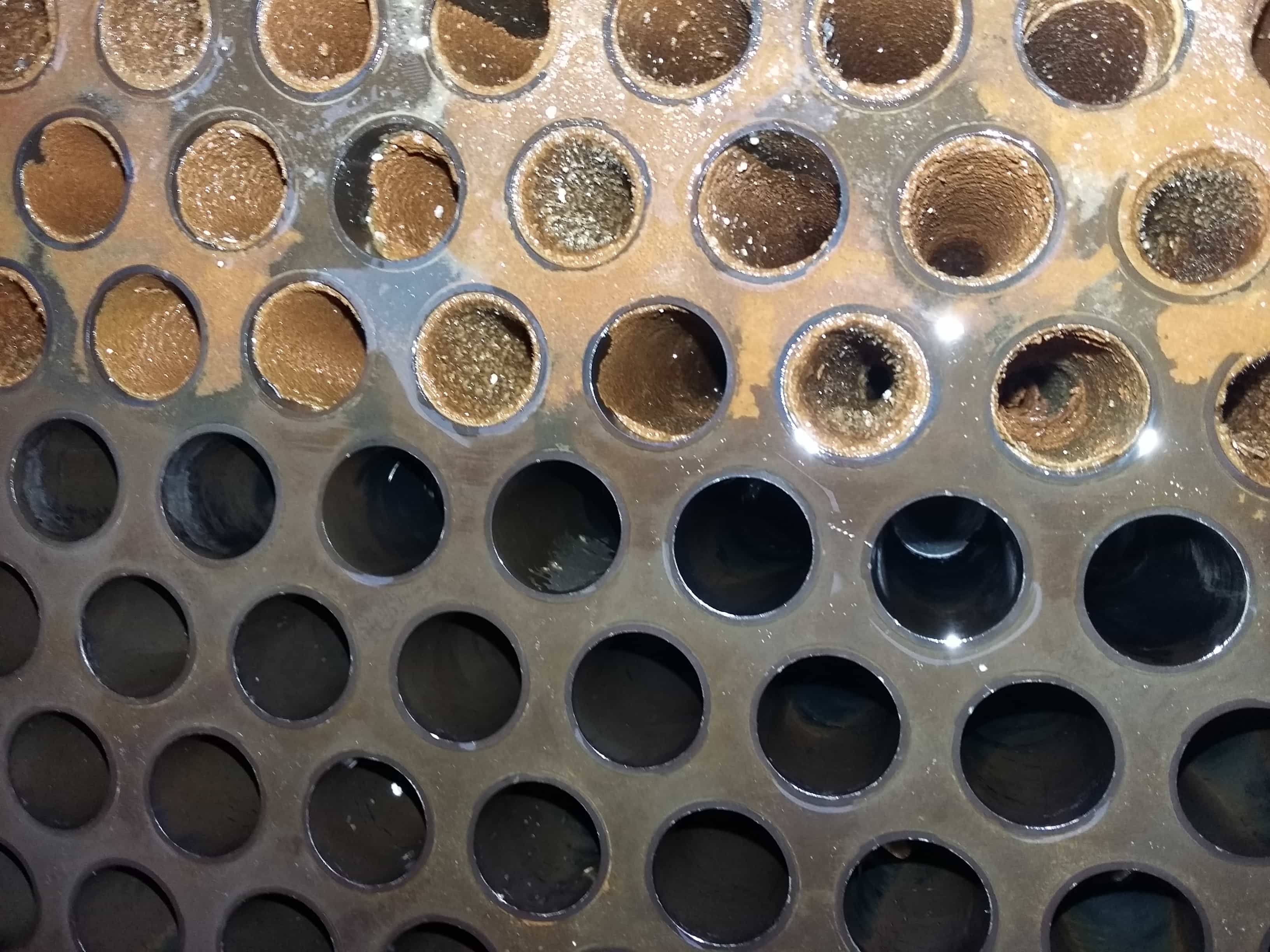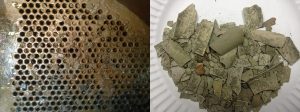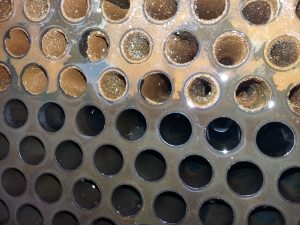Condenser and heat exchanger deposits can wreak havoc on a cooling system. Heat exchanger deposits can cause a multitude of issues, including under-deposit corrosion, heat transfer degradation, increased backpressure, and decreased flow rates. Ultimately, each of these factors leads to either decreased system performance or a shorter lifespan for the heat exchanger, and both of these outcomes are huge costs to heat exchanger system users.
Given the multitude of problems condenser and heat exchanger deposits cause, the only solution is to remove them as frequently as possible. Luckily, cleaning condenser and heat exchanger tubes is a quick, simple, and low-cost project. Additionally, condenser tube cleanings will typically pay for themselves within the first month of operation due to savings in fuel costs gained from higher system efficiency.
Our process for removing these deposits is mechanical tube cleaning utilizing our patented tube cleaning projectiles. For more information on this process visit How to Clean Condenser and Heat Exchanger Tubes.
Condenser Cleaning: Removal of Loose Silica And Mineral Tube Scaling
The close-up picture below of the condenser tube sheet shows a deposit inside one tube of a power plant condenser. Beside it is the deposit from this ONE condenser tube! This deposit sample weighs 1,464 grams (3.228 pounds). In this condenser, there were approximately 28,000 tubes. If this deposit represents an average amount per tube then that would mean that these tubes had a total of 90,384 pounds of deposit in this condenser! Even a fraction of this total represents a serious amount of sediment and scale build up. Neglecting the removal of this tube deposit would have caused serious issues.
Thick, Hard Calcium Scaling in Condenser Tubes
Calcium-based mineral scaling is one of the hardest deposits to remove from water-cooled heat exchanger and condenser tubes. The tube sheet pictured below shows calcium carbonate scaling on the inlet tube sheet of the condenser. The tube deposit also pictured below is the scaling that was removed from this condenser. This deposit was tightly adhered to the tube wall and removed with our patented metal tube cleaner. The deposit kept the shape of the tube, which is why it has cylindrical shape. The calcium scaling was 0.080 inches thick, which is large enough to create an insulation barrier and reduce heat transfer. This type of deposit also is infamous for leading to under-deposit corrosion and early tube failure.
Reboiler Heat Exchanger Deposits
Depending on the process of a heat exchanger, the shell side can reach high enough temperatures to lead to some pretty bad deposition on the tube side. Reboilers are a specific type of heat exchanger that have high shell side temperatures that can lead to heavy fouling increasing on the inside of the tubes. The picture below shows heat exchanger fouling and some nasty scale build-up in a reboiler on the top half of the photo and the tubes post-cleaning on the lower half of the picture.
For more information on how Projectile Tube Cleaning systems can help remove your condenser and heat exchanger tube deposits, please contact us:




